Date: 9th July 2015 Location: Whinlatter, The North Western Lake District.
Route map for Hopegill Head Gullies 1 090715 by Andy Beck on plotaroute.com
Route map for Hopegill Head Gullies 1 090715 by Andy Beck on plotaroute.com
It has been some time since I ticked off the last required reference for my Wainwrights in Colour project, well that is those ones where I needed to see the actual view that Wainwright used in the Pictorial Guides. However, as I work to complete the final sketches for the project there is one small sketch in his books that stirred my curiosity. So it was that recently I planned to go over to the fells and investigate further.
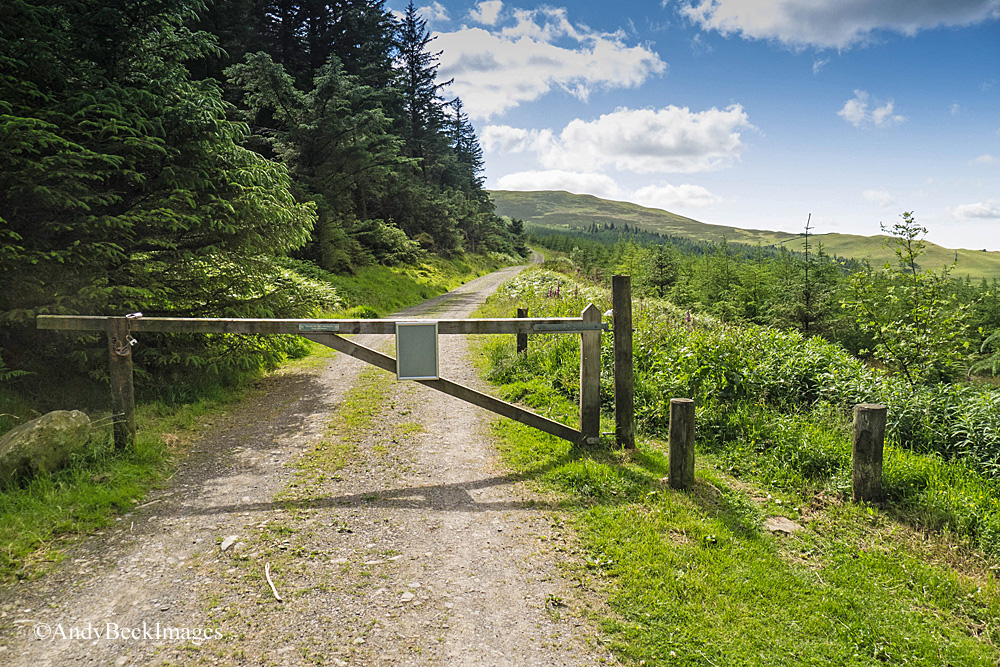
It began at Whinlatter Pass, the road which links Braithwaite and Lorton where I parked in one of the forestry parks. It was a glorious afternoon weather-wise with large patches of summer blue sky broken by big fluffy white clouds, perfect for walking and a perfect time of year to try to satisfy my curiosity.

A. Wainwright, The North Western Fells Pictorial Guide ©Frances Lincoln and the Wainwright Estate, reproduced here with kind permission.
It all stems from this illustration on Hopegill Head 7, Viscaria alpina (Red Alpine Catchfly), a filler sketch for the page of this most rare of alpine flowers. Did Wainwright actually see this delicate bloom in person or did he just use a photograph or drawing from another reference book as a basis for his own sketch? The reason behind my questioning is of course purely something that stems from my labours on the project where on many occasions I have asked myself why AW visited certain off track locations. This one has been lurking in my mind for quite a while and I needed to try and answer my own questions which are based on the habit of this rarity which now is known as Silene suecica or Lychnis alpina. This small plant only grows here in very limited numbers, in the region of 60, it cannot be found anywhere else in England. It survives on narrow ledges where the sheep cannot reach. The flowering period is though June and July only and once flowered it is hard to identify amongst other vegetation. So, did Wainwright venture out onto Hobcarton Crag just at the right time of year and into some precarious locations away from sound paths just to see this little bloom? I was hoping my outing today would put my mind at rest.

We took the easy forestry track through Hobcarton Plantation heading up towards the crag. I know that Wainwright did actually visit this valley as his drawing at the bottom of page 7 is taken from a location up on the hillside to the left so he at least did get a good look at the crag from close by even though there are none of his routes hereabouts. This is my watercolour sketch of that drawing:


Soon we were out into the open spaces of the Hobcarton valley and the foxgloves were putting on a fine display, I was hoping that this wouldn’t be the only pink flower that I would see today.
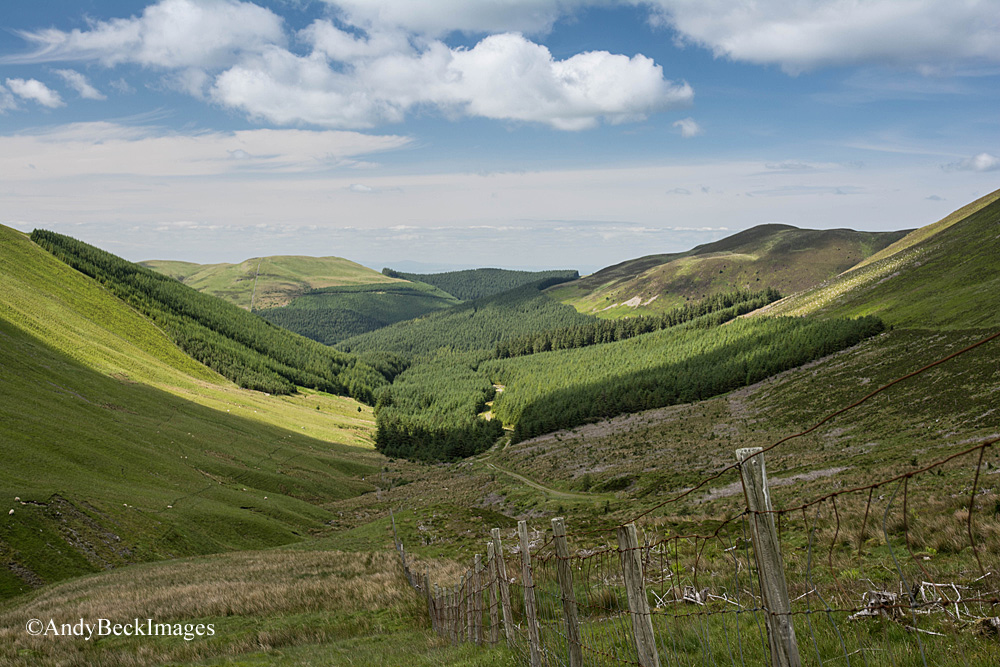
On gaining height the view behind us to the north was impressive, the hills of Scotland appearing behind the shoulder of Graystones.
To my right the buttressed face of Hobcarton Crag loomed large.

The two main gullies were a likely habitat but my plan was to investigate the whole width of the crag from left to right just in the hope of finding it so I kept walking onwards, up past the now dry tarn and towards the left edge of the broken fell.

Bearing in mind that this plant has to be out of reach of sheep I had to scour all the nooks and crannies of steep or sheer rock. This included climbing up into the crevices of the crag.
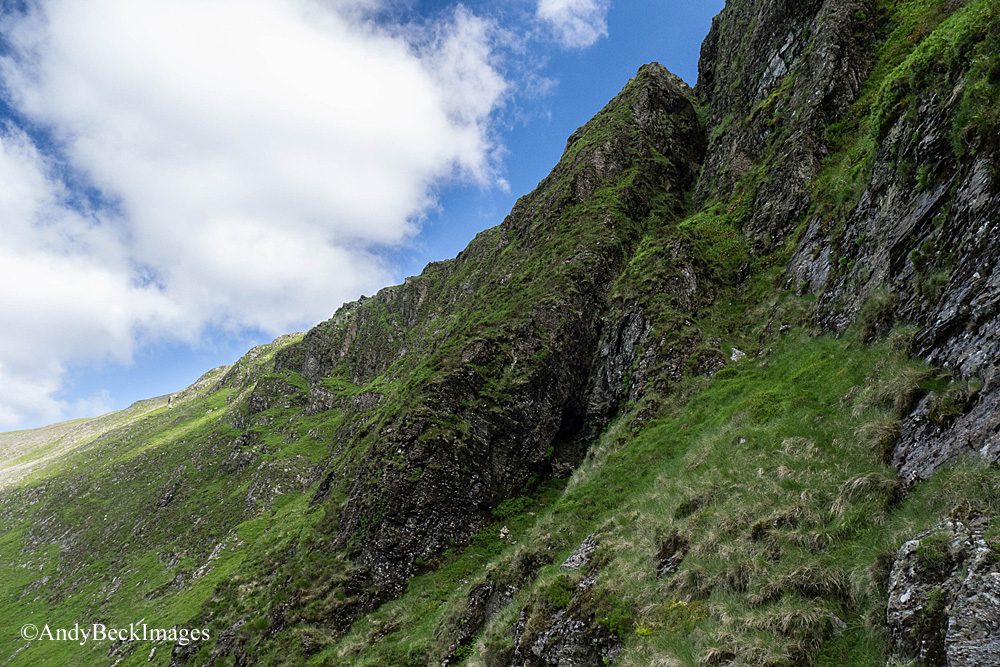
Plenty of Parsley Fern but no luck here. I proceeded to make my way around to the right, hugging the base of the crag and constantly scanning the bare rock above for any hint of this secretive plant. It was a time consuming mission.

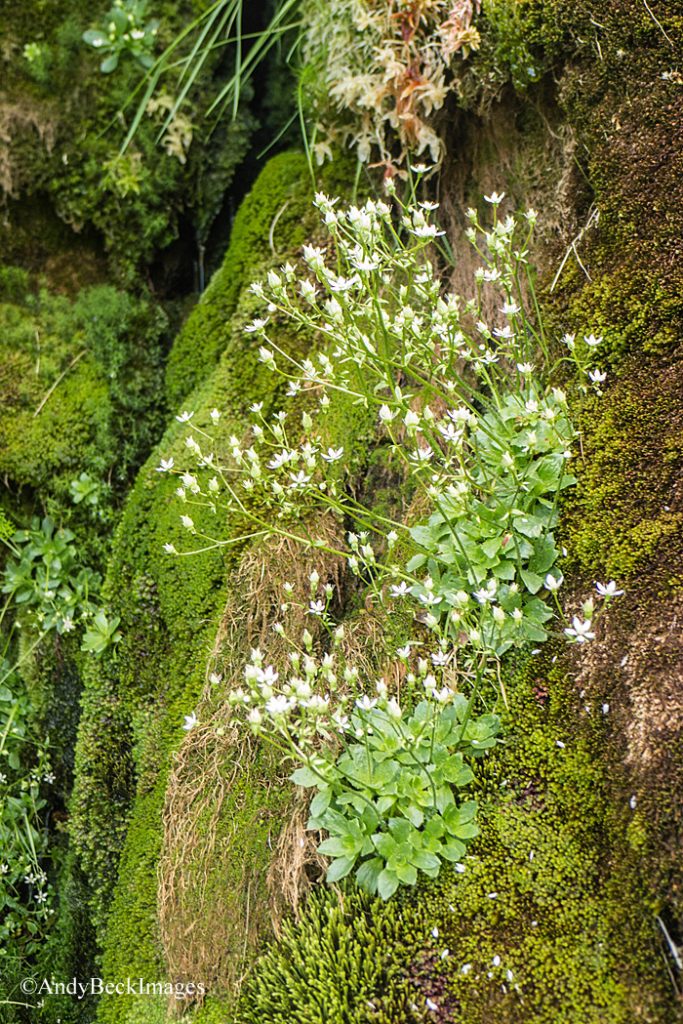
Obviously the habitat was suitable for this type of flora as there were many patches of other species especially saxifrage.

As usual Bailey was enjoying himself, he stays close at hand and does his own thing, taking in the fresh scents. No matter where I am I have to consider not only my own safety but his. Luckily he is a sure footed and nimble hound so I don’t have to concentrate on his behaviour too much in locations such as this.

Looking back along the crag we had now reached a contour well above the valley floor.

There were plants here which I couldn’t identify but I knew the colouring and shape of this one wasn’t the one I was after.

Then…as we rounded a corner….my eyes caught sight of this little cluster of pink blooms. I was fixated on spotting such a sight and my pulse quickened……
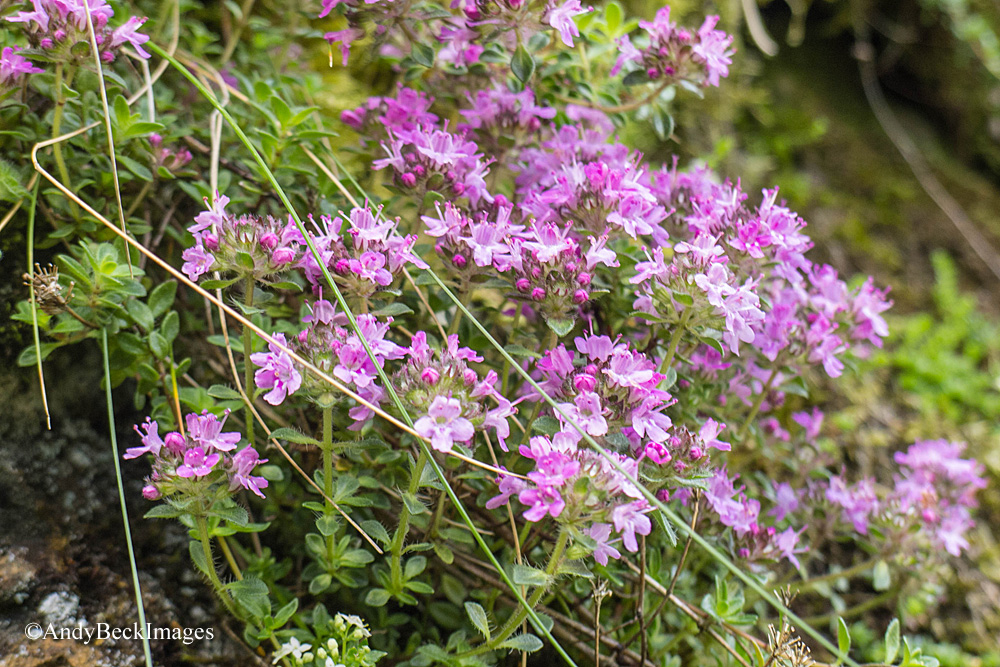
..but no, disappointment. Close inspection proved it to be a fine clump of Wild Thyme. I muttered something under my breath and proceeded with my task.

I photographed any unusual foliage clinging to the rock, after all, the Catchfly may already be past flowering and I may have missed my chance but to have least seen evidence will be a result. (This isn’t it, the leaf shape is wrong).

We were now at the foot of one of the main gullies and despite the steep incline it was worth exploration. One of the traits of the Alpine Catchfly is that is grows on mineral rich rock and I considered this change of rock colour was a bit of a clue.

This terrain is totally pathless, the scree is not only steep but very loose. It was a case of either keeping to the loose scree run or venturing onto the deep heather to the sides which hid fractured chunks of rock. It was hard going but we managed to gain height to the pale face of rock at the top before our way was blocked by much steeper ground. It was just to precarious to proceed so we retreated back down the way we came. No luck here.

The next scree gully was investigated again without success. These were places where concentration was required, not only trying to find the flower but only for our own safety. The drop down into the valley was a long one. One of the main considerations that constantly filled my mind was would Wainwright have done this and to be honest most of the time the answer I told myself was no, it would likely to have been well out of his comfort zone. In fact in doing research on the internet for this foray it seems that very few have even set foot on or near this territory. There are a couple of recognised climbs on the crag but it’s not walkers terrain and I do not recommend following in my footsteps. It was about at this point that I realised just how much of an obsession the gaining of these references had become.
The views of course were quite dramatic. We picked our way gingerly back to safer ground.
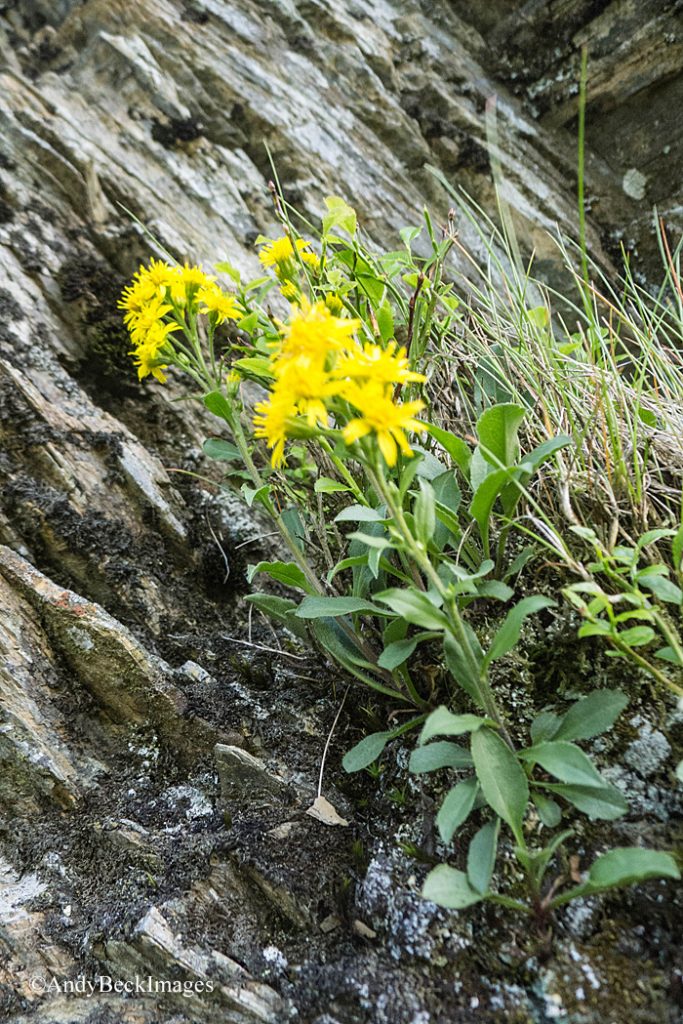
As much as it was nice to see more flowers (like this Goldenrod) clinging to small ledges and making good photographs difficult I have to admit I was a little disheartened and I knew we were nearing the end of the viable locations to find the plant.

Time was moving on and the bare steep faces of rock were behind us. The face of the crag was still steep so I took the option to head up to the ridge via this less extreme scree run. As with all the previous gullies this is not a path in any shape or form, it is just where the ground is exposed and gives a bit more of a sure footing. We climbed slowly, two steps forward, one back.

After what seemed like an age we broke into the late afternoon sun near the ridge. The late light lit the heads of the Sphagnum moss flowers.
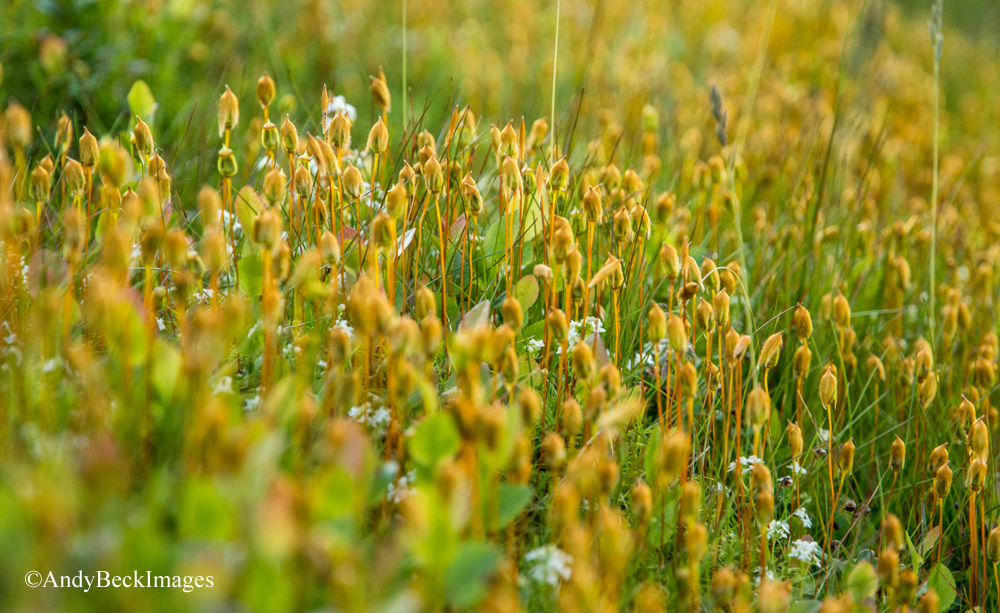
I was pleased to just sit down, capture a few photos and take stock of what we had just done. Even the last bit of ascent is perhaps previously untrodden by walkers, nice to break new ground.

On reaching the ridge Hopegill Head where we were heading to next was to our left…..
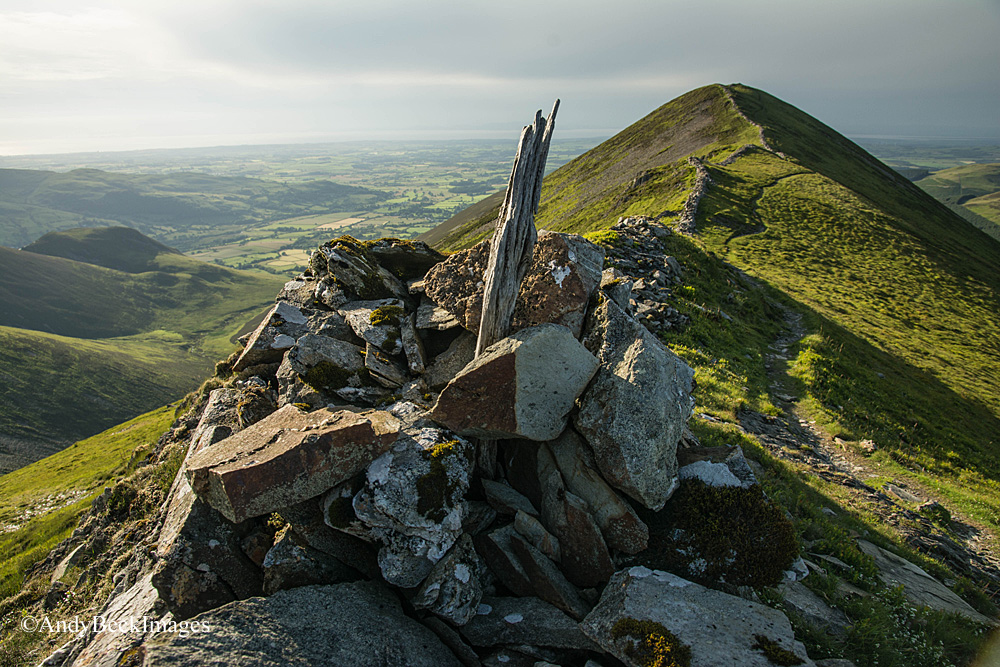
..and to our right, Ladyside Pike and the flatlands of north Cumbria. We now strolled up to the fell top of Hopegill Head.

Passing by the crevice of The Notch which breaks the edge of the crag permitting fine views of the crags below. This is another scen which required a sketch for the Wainwrights in Colour.
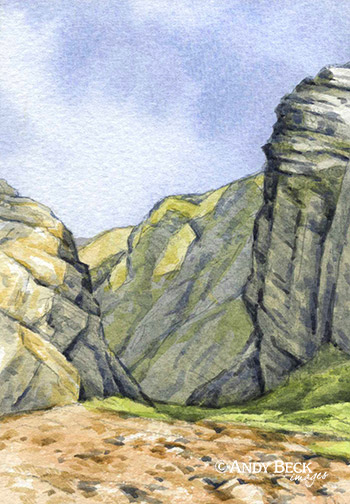

Fine geology on the approach to the summit, layers of rock like the skin of an onion.

And then the summit of Hopegill Head is reached. There is a fine ridge from here to Whiteside, one of my personal favourites, but not on our agenda today.

The true summit sports a small cluster of stones, with Eel Crag beyond.

As we proceed on towards Grisedale Pike along the rim of the crag it gave fine views down onto the ground which we explored earlier and a clear view of our actual ascent to the ridge up the slopes of Ladyside Pike. Somewhere down there is the elusive flower…

Locals and Ladyside Pike.

Ladyside Pike and the crag from the top of the first gully that we investigated.
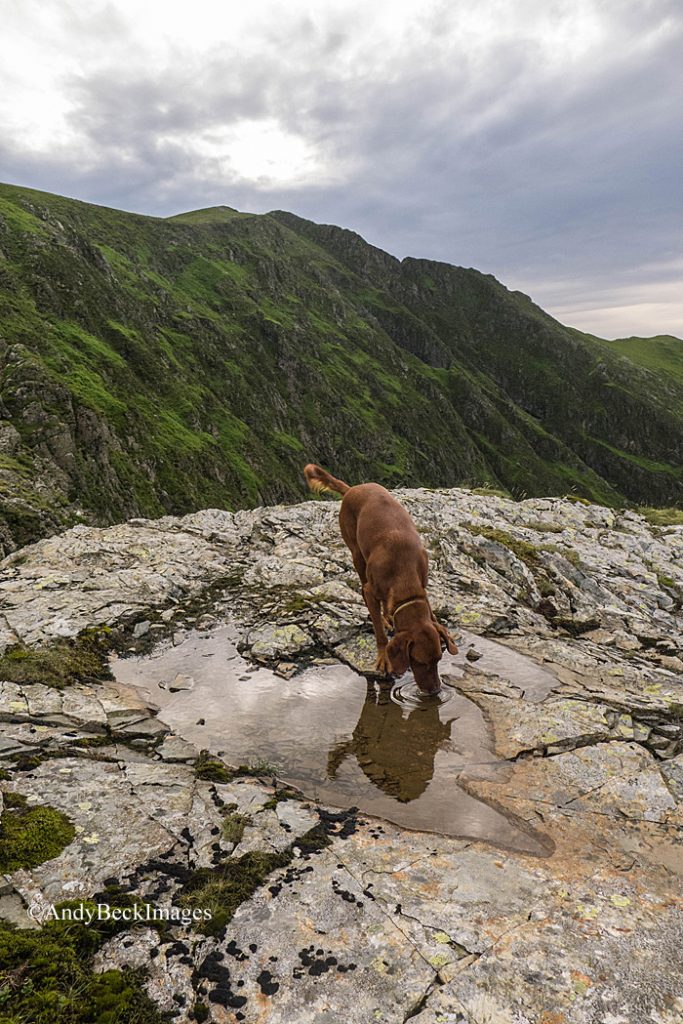
Bailey takes chance to quench his thirst. The view over to the crag from here is another scene sketched for the Wainwrights in Colour.
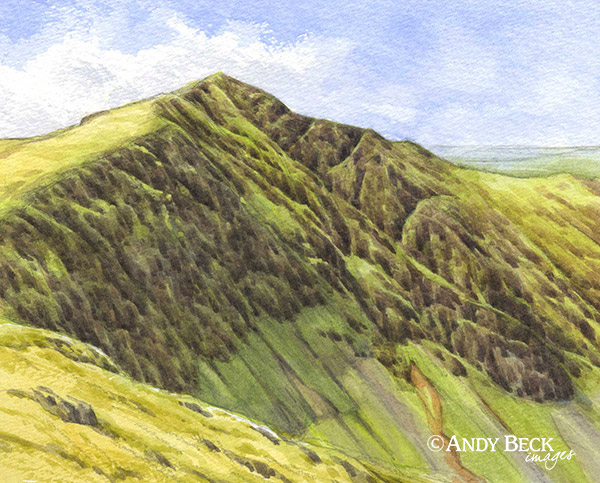
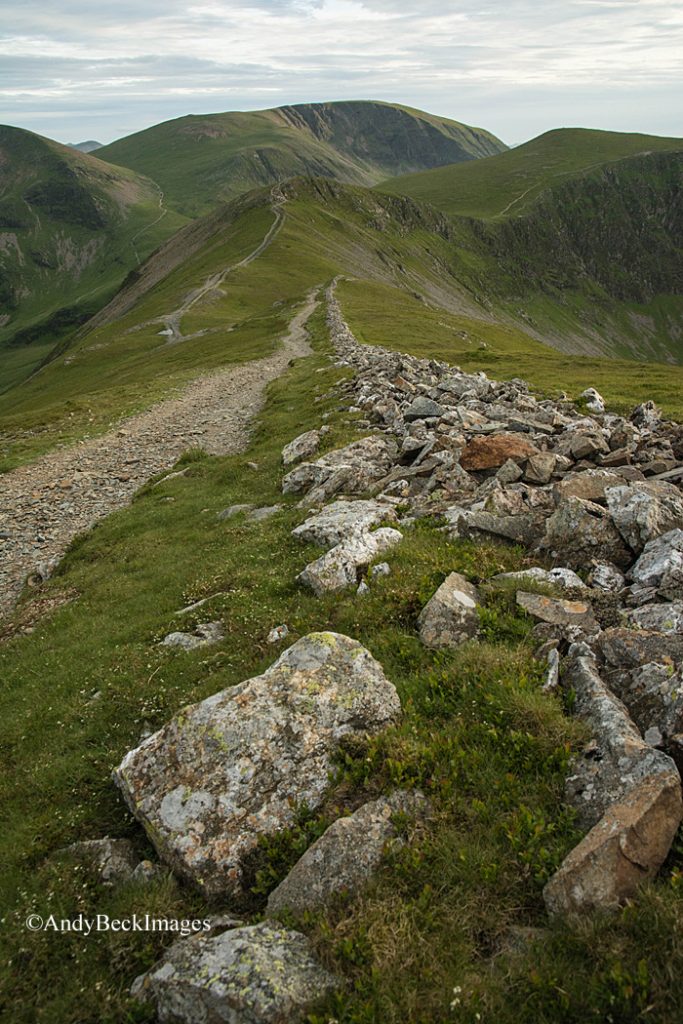
The sky had become overcast and the only light was on Grasmoor as we approached Grisedale Pike summit.

But it then moved on to the fells past Sail. This is a fine time of day to be up on the hill tops.

Sitting on Grisedale Pike summit the evening sun was now restricted to shafts of light over the coast. We sat and watched as it made its way towards us.

A lone Swaledale came to join us to take in the late evening sun.

Then the light hit our location, illuminating the ridge along which we had just come…
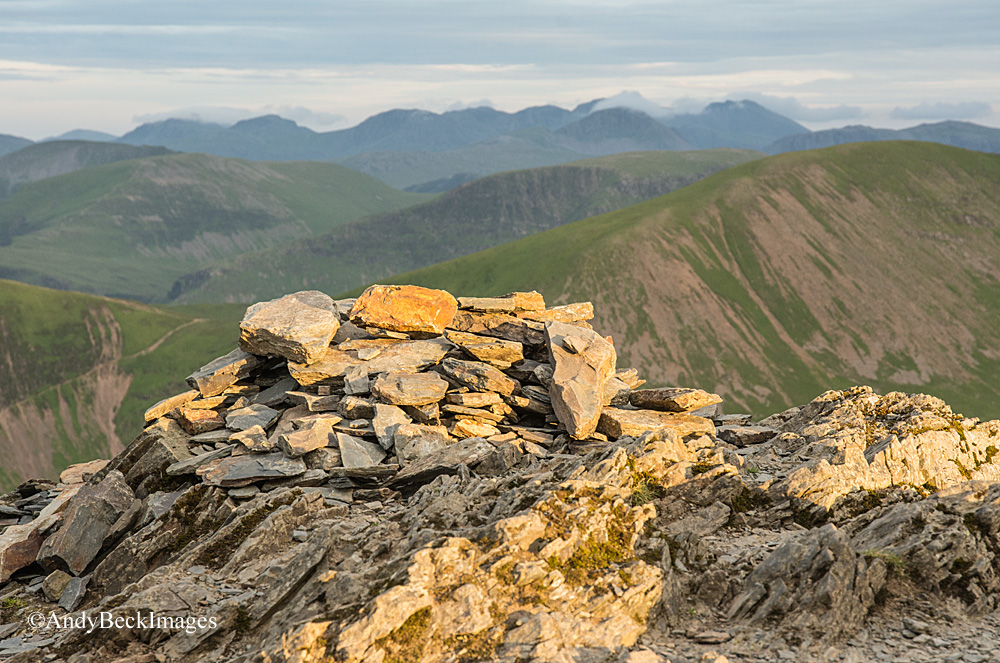
..and the summit cairn. It was brief but glorious. A fitting end to a challenging afternoon. From where we were the whole front of Hobcarton Crag was laid out and I could plot out route, hardly what you would call “direct” but it had served it’s purpose.

I had set out to find a rare species of plant and that came without success, however, on the other hand I had explored the reasonably accessible (and safe) locations on the crag which has made me think that Wainwright didn’t actually see this plant for himself. Of course I may be wrong. From here it was a simple stroll along Hobcarton End.

Light was fading as we reached the cairn at the termination of the ridge. From here we took a direct route down the fellside through thick heather towards the direction of the forestry track which we had left some time earlier, reaching the car just before 10pm. All along the ridge of descent I was questioning my day, had I missed the plant? Was it past flowering I had been too late? Had I looked in all the right places? These things continued in my head for the following few days……it’s called obsession.
Thank you for reading.
Hi – I really enjoyed this read ! I was looking down onto hobcarton crag yesterday thinking about this flower. Did you ever get back to look again?? Thanks again for this 🙂
Hi Jason,
Thanks for taking the time to comment and for reading. Yes, I went back about 2 weeks later and during a fairly hairy route I was able to locate the flower abbeit from a distance. Mission accomplished 🙂